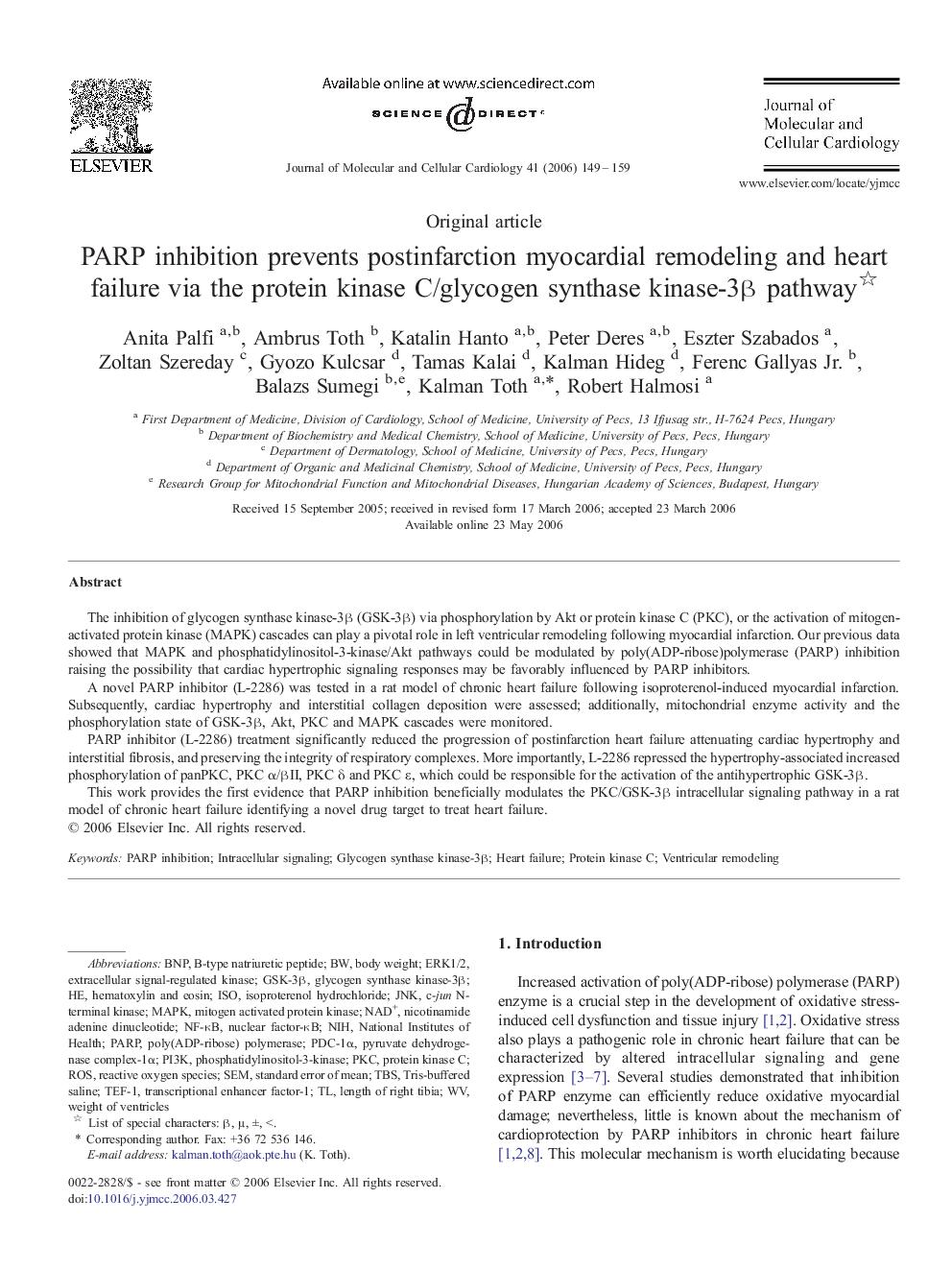| Article ID | Journal | Published Year | Pages | File Type |
|---|---|---|---|---|
| 2192462 | Journal of Molecular and Cellular Cardiology | 2006 | 11 Pages |
The inhibition of glycogen synthase kinase-3β (GSK-3β) via phosphorylation by Akt or protein kinase C (PKC), or the activation of mitogen-activated protein kinase (MAPK) cascades can play a pivotal role in left ventricular remodeling following myocardial infarction. Our previous data showed that MAPK and phosphatidylinositol-3-kinase/Akt pathways could be modulated by poly(ADP-ribose)polymerase (PARP) inhibition raising the possibility that cardiac hypertrophic signaling responses may be favorably influenced by PARP inhibitors.A novel PARP inhibitor (L-2286) was tested in a rat model of chronic heart failure following isoproterenol-induced myocardial infarction. Subsequently, cardiac hypertrophy and interstitial collagen deposition were assessed; additionally, mitochondrial enzyme activity and the phosphorylation state of GSK-3β, Akt, PKC and MAPK cascades were monitored.PARP inhibitor (L-2286) treatment significantly reduced the progression of postinfarction heart failure attenuating cardiac hypertrophy and interstitial fibrosis, and preserving the integrity of respiratory complexes. More importantly, L-2286 repressed the hypertrophy-associated increased phosphorylation of panPKC, PKC α/βII, PKC δ and PKC ε, which could be responsible for the activation of the antihypertrophic GSK-3β.This work provides the first evidence that PARP inhibition beneficially modulates the PKC/GSK-3β intracellular signaling pathway in a rat model of chronic heart failure identifying a novel drug target to treat heart failure.
